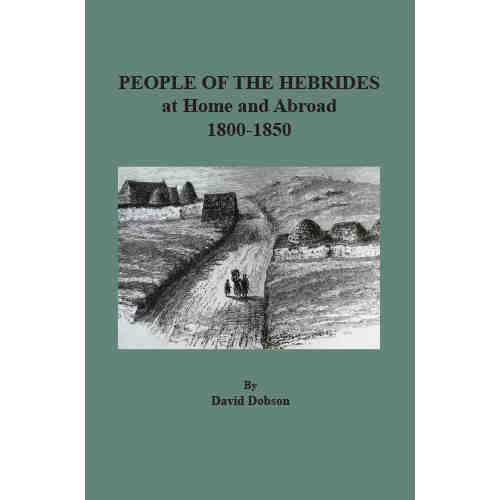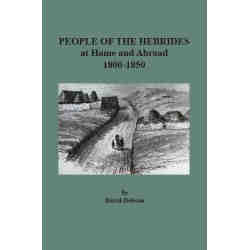Description
The Hebrides are a small group of islands off the west coast of Scotland. The second half of the 18th century saw a significant increase in the population of the Scottish Highlands, one greater than the ability of the local economy to sustain. This pressure contributed to an outflow of population from the Highlands—of which the Hebrides were a part–to the burgeoning industrial towns of Lowland Scotland and England, as well as to the Americas and Australia.
A major source of employment for these Highlanders was in military service with the British Army, commencing with the Seven Years War [the French and Indian War] from 1756 to 1763, the American War of Independence from 1776 to 1783, and the French Wars from 1789 to 1815. Many of these veterans, encouraged by the British government, decided to stake their futures in the U.S. and Canada.
At the same time, the Industrial Revolution was creating a demand for wool for the textile industry. This demand resulted in a restricting of agriculture in the Hebrides. By abandoning traditional farming–either by raising rent or by “clearing the land”–landowners could generate more income, but at a social cost. Exacerbating the new agricultural practices, the potato blight and the famine of 1837 and 1838 meant that many families were living in poverty. In the end, unemployment, destitution, and the large-scale evictions were the main reasons for emigration from the Highlands and notably from the Hebrides.
This book attempts to identify early-nineteenth-century residents of the Hebrides, especially those from the islands of Skye, Islay, Mull, Lewis, and Harris, and Hebrideans who chose to immigrate to the Carolinas, Maritime Canada, and Australia. Most modern Hebridean place names are Anglicized versions of the original Gaelic place names. The Hebrideans were Gaelic speakers, so the Gaelic place names that they would have used have been added. What is different about Highlander emigration is that people–including the Hebrideans–emigrated as family groups, settling together where they could maintain their Gaelic language, culture, and religion, often in frontier locations such as Cape Breton or the Cape Fear Valley.
In all, this work, drawing upon primary sources in Scotland and abroad, identifies close to 1,500 heads of household from the Hebrides by name, a date, a place in the islands, and the source. Since most of these travelers were accompanied by family members, the listings provide the names and relationships of three or four times as many persons overall.







Reviews
There are no reviews yet.